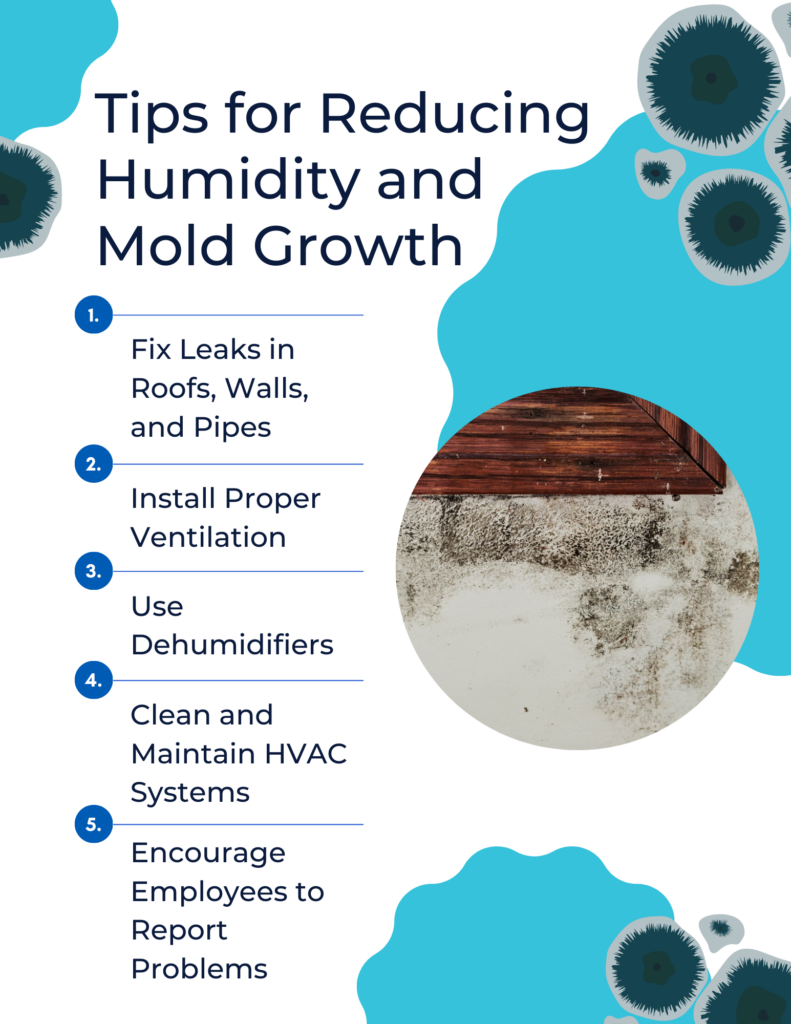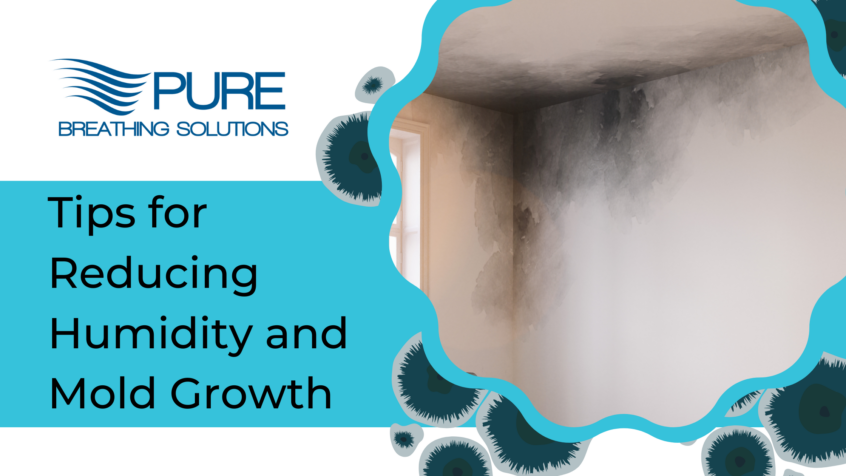As a business owner or manager, you understand the importance of maintaining a healthy work environment for your employees. However, one of the biggest threats to indoor air quality and employee health is mold growth.
Mold not only poses health risks to employees but can also damage building infrastructure and lead to costly repairs. Here, we’ll look at how indoor humidity levels play a significant role in mold growth and what you can do to prevent it.
Understanding Mold Growth
Mold is a type of fungus that thrives in warm, moist environments. It reproduces by releasing spores into the air, which can then settle and grow on surfaces. Mold growth can cause health problems such as respiratory issues, allergies, and skin irritation. It can also damage building materials, leading to structural problems and expensive repairs.
Indoor Humidity and Mold Growth
One of the main factors that contribute to mold growth is indoor humidity levels. Mold requires around 60% humidity to grow and thrive. However, some types of molds can grow at even lower humidity levels. This means that if your building’s indoor humidity levels are consistently above 50%, you are at risk for mold growth.
High humidity levels not only promote mold growth but also negatively impact indoor air quality and employee health. Excess humidity can cause musty odors, condensation on windows and walls, and a general feeling of discomfort. In addition, high humidity levels can exacerbate health issues such as allergies, asthma, and other respiratory problems.
Common sources of excess indoor humidity in commercial buildings include leaking pipes, poor ventilation, and inadequate air conditioning systems. As a business owner or manager, it’s essential to identify potential sources of excess humidity and address them promptly.
Measuring and Controlling Indoor Humidity
To maintain a healthy indoor environment, you need to monitor and control indoor humidity levels. There are several tools and methods available, including hygrometers and data loggers. Once you have identified the indoor humidity levels, you can take steps to control them.
To control indoor humidity levels, ensure proper ventilation and air circulation throughout the building. You may also consider using dehumidifiers in areas with high humidity. Additionally, regular maintenance and inspection of HVAC systems and building infrastructure can help identify and address potential sources.

Best Practices for Mold Prevention
Preventing mold growth requires a proactive approach. Implementing an effective mold prevention plan and looking to identify signs of mold growth in your commercial building can help minimize the risk of mold growth and protect your employees.
Some tips for reducing indoor humidity levels and preventing mold growth include:
- Fixing leaks in roofs, walls, and pipes
- Installing proper ventilation systems
- Using dehumidifiers in areas with high humidity levels
- Regularly cleaning and maintaining HVAC systems
- Encouraging employees to report any signs of mold growth or water damage
It’s never too early to start inspecting and investigating your space for mold.
The Role of Professional Indoor Air Quality Testing
Professional indoor air quality testing can play a critical role in identifying potential issues early. A reputable testing service provider can offer accurate data and recommendations for maintaining a healthy indoor environment.
Give Your Team a Breath of Fresh Air
By monitoring indoor humidity levels, looking for signs of mold growth, addressing potential sources of excess humidity, and implementing an effective mold prevention plan, you can maintain a healthy environment and avoid costly repairs.
At Pure Breathing Solutions, we understand the importance of maintaining healthy indoor air quality in commercial buildings. Contact us today to learn more about our testing services and how we can help you maintain a healthy work environment for employees.
